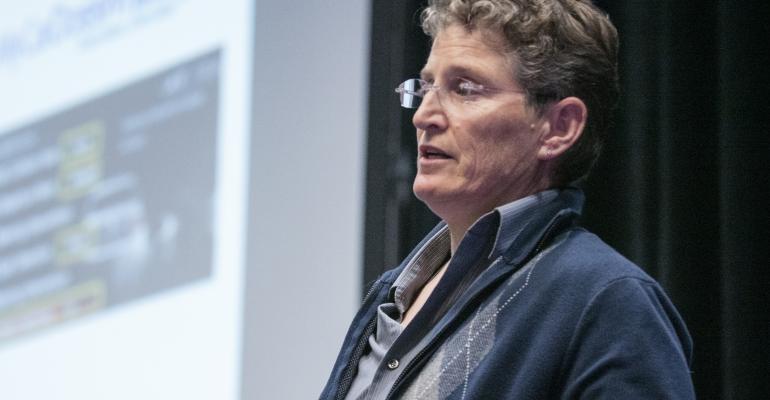NOVI, MI – UX engineers and designers must focus on drivers and how they interact with complex systems en route to figuring out how to manage all manner of distraction entering today’s vehicle cockpit.
“We need to simplify – too many of these systems are just too darn complicated,” observes Lisa Southwick, manager-UX & Quality at the Hyundai-Kia America Technical Center, during a presentation titled “Minimizing Distraction While Adding Features” at the 2018 WardsAuto User Experience Conference.
“Our customers are telling us they’re struggling and feel like these systems are creating distractions,” Southwick adds, referring to proliferating assistive features such as lane-departure warnings and lane-keeping systems that beep and buzz or physically correct the steering wheel to hold a vehicle in place in a lane.
Southwick and Jason Johnson, director-User Experience Design at Harman International, discussed ways to limit driver distractions responsible for hundreds of highway deaths and thousands of injuries annually.
Eliminating confusing UX interfaces and reducing distrust in the operation of driver-assistance systems is a starting point, Southwick and Johnson agree. Controls need to be easy to operate and displays need to be clear and understandable.
 Jason Johnson, Harman UX design director.
Jason Johnson, Harman UX design director.
Southwick notes that confusing blindspot warnings that alert when no other vehicles are nearby, or indicator lights that get washed out by bright sunlight, can cause drivers to simply shut the systems off. Drivers also need clear icons showing when adaptive cruise control is in operation and exactly how the system is responding.
Johnson expresses concern UX systems relying too much on certain interfaces, such as touchscreens, may overwhelm consumers with complexity and make simple tasks harder to perform.
“Did we just shift the problem?” Johnson asks, referring to the concept of removing myriad controls and buttons and replacing them with equally complex touchscreens or other interfaces.
Eliminating unnecessary systems, simplifying and focusing on experience-centric design is the goal of Huemen, Harman’s human-centered design division, Johnson says. Systems need to undergo an iterative and customer-focused collaborative design process well before they appear in vehicles, he says.
Establishing UX standards might help if the right guidelines are created, but that may be a tough task because the field is changing so rapidly while setting specific guidelines would take years to complete.
“We need to put the UX designers in the driver’s shoes,” conducting testing, getting customer feedback and acting on that information, Southwick says.





